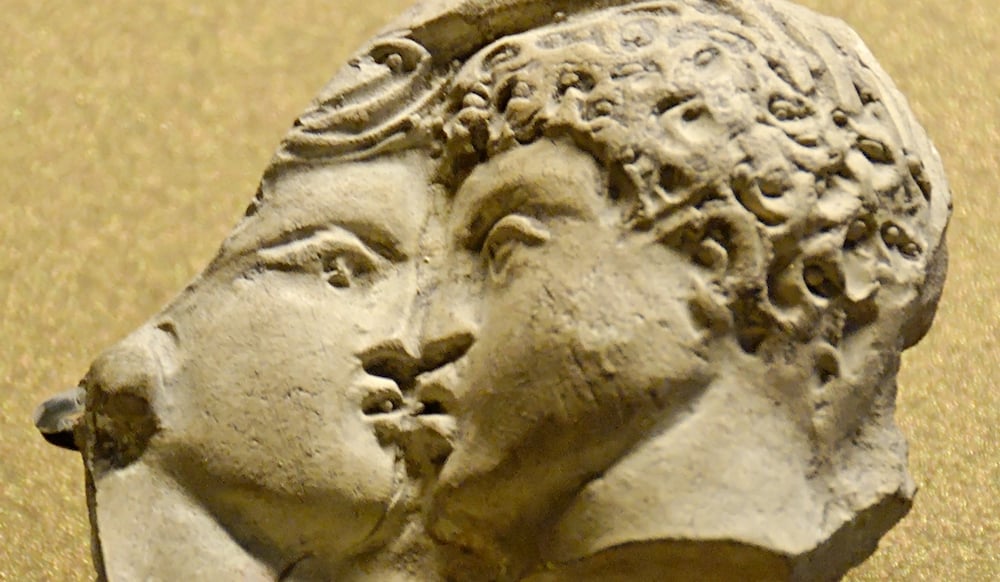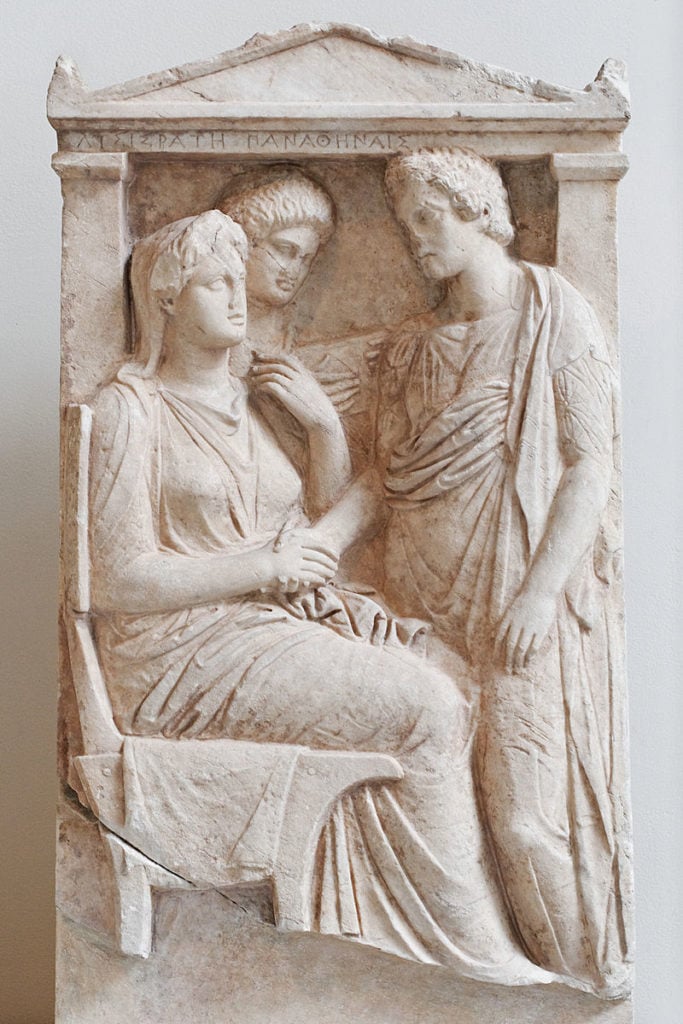
In ancient Greece, kissing was not considered strictly romantic or intimate; rather, kissing was a often a greeting between acquaintances and could be used as a sign of respect.
Ancient Greeks would often kiss each other and had distinct social rules for where these kisses would be placed on the body, depending on status and the relationship between the two people involved.
Kissing was also certainly considered a sign of affection, as in many of Homer’s works, kissing is used to illustrate a deep bond of friendship or kinship. Often, parents were described as kissing their children in order to show their love, and men who were close friends would also kiss.
Images depicting kisses also showed up in mythology, particularly in relation to satyrs and nymphs.
Kissing in Ancient Greece
One common greeting in the ancient Greek world was a kiss. This could be on the hand, the cheek, or the lips.
An ancient Greek historian named Herodotos of Halikarnassos, who lived between 484 and 425 BC, describes kissing as greeting between the Achaemenid Persians, who had conquered many of the countries on the Mediterranean Sea.
“When one [Persian] man meets another on the road, it is easy to see if the two are equals; for, if they are, they kiss each other on the lips without speaking; if the difference in rank is small, the cheek is kissed; if it is great, the humbler bows and does obeisance to the other.”
Although in the modern world kissing is associated with romance and intimacy, this was not the case in ancient times. When kissing was meant to be romantic, it was frowned upon if done in public. If women initiated romantic kisses, it would be taken as a sign of promiscuity or other negative attributes.
The ancient Greek handshake
Out of all the gestures of greeting used until recently around the globe, the handshake is the most widely used. This rang true in ancient Greece, where the handshake was the most commonplace greeting in the country.
The oldest indication of the handshake as a gesture of greeting is an ancient Greek sculpture, specifically one found on a funerary naiskos from the grave of Agathon and Sosykrates.

References to handshakes can also be found in Homer’s Iliad, which dates to roughly the year 800 BC. The gesture is described in that work variously as a symbol of agreement or oath, an offer of comfort to the bereaved, or as a pledge of trust.
Significantly, a handshake in ancient Greece meant that the two parties were equals: Gods shook hands with gods, warriors shook hands between them, and athletes shook hands as a sign of acknowledging respect for their rivals.
See all the latest news from Greece and the world at Greekreporter.com. Contact our newsroom to report an update or send your story, photos and videos. Follow GR on Google News and subscribe here to our daily email!



